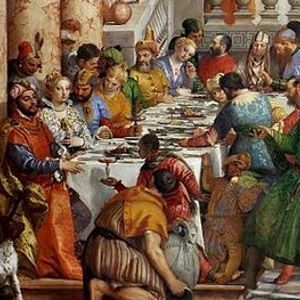There always have been taverns, inns, takeout places. If you have an urban society, you need to have places where people who, say, are from the countryside and going to a market can have a meal. But it wasn’t just travelers who needed a place to eat. In medieval European cities, a lot of people didn’t have kitchens. And these city dwellers might have gone to food stalls to pick up a snack or a loaf of bread.
But none of these food stalls or inns are really the same thing as a restaurant. What’s different from those kinds of age-old establishments is that a restaurant offers a wider choice. First, a choice of what you want to eat. It has a menu—you don’t just settle for whatever they’re cooking. Second, there’s choice of times. It’s not a set meal served at a particular time. And third, you have a choice of who you eat with. The tradition at inns is that you eat at a common table or maybe you eat in your room. But the idea of separate tables for parties of three, four, two, whatever, is typical of a restaurant.
See the podcast and transcript of “Inventing the Restaurant: From Bone Broth to Michelin” on the Gastropod website (2017)

